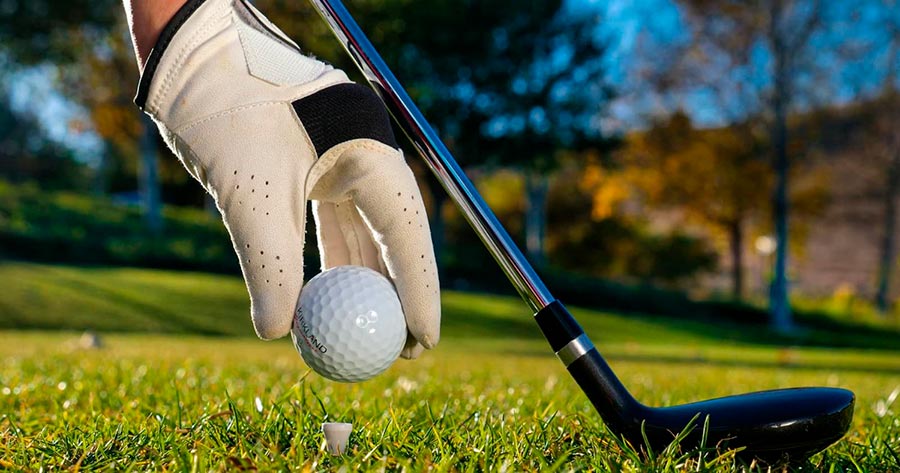Starting golf can feel confusing at first. Your first golf lesson is a big step toward improving your game. Knowing how to prepare will help you relax and get more out of it. Check out these simple First Golf Lesson Tips to kick off confidently!
Key Takeaways
- Bring basic gear like golf clubs, balls, and a lightweight bag. Wear comfortable clothes and shoes for easy movement.
- Research your instructor’s credentials and teaching style to match your learning needs.
- Set clear goals for the lesson, like improving your swing or short game. Share these with the instructor in advance.
- Arrive early to warm up by stretching and hitting practice shots to loosen up and focus.
- Take notes during the lesson on drills or tips shared by the instructor, then practice them soon after for steady progress over time.
Gather the Necessary Equipment
First, grab the basics to get started. Having the right gear makes learning smoother and more fun.
Golf clubs, balls, and bag
A set of golf clubs isn’t optional. A beginner might start with a basic set that includes a driver, an iron, and a putter. PGA Pros often lend clubs if needed, so no need to splurge right away.
Golf balls matter too—a dozen mid-range balls work best for practice. Brands like Titleist or Callaway offer quality options.
Don’t forget the bag! It keeps gear organized and easy to carry around the golf course. Look for one with multiple compartments and lightweight material. Carrying everything by hand? That’s not just hard—it’s exhausting.
Starting light helps make your first golf lesson less stressful and more fun!
Comfortable clothing and shoes
Loose, breathable clothing works best for a first golf lesson. Polo shirts and khaki or athletic shorts are common on a golf course. Avoid anything tight or restrictive—comfort is key for practicing your golf swing.
Shoes with soft spikes or sturdy sneakers help grip the ground during swings. High heels, sandals, or boots will throw off balance and affect movement. Dress in layers if it’s chilly; weather can shift quickly on the course.
Research Your Instructor
Find out who will be teaching you. A good golf instructor can make a big difference in your golf improvement journey.
Check credentials and teaching style
Choose a golf instructor with proven experience. Look for professionals like Mike Bender (2009 PGA National Teacher of the Year), Hank Johnson (2004 winner), or Lynn Marriott (1992 LPGA honoree).
These names show commitment to teaching and skill development. Their track records highlight their success in shaping solid golf swings and improved short games.
Study how they coach before booking lessons. Some instructors focus on technique, while others may emphasize fun drills or golf practice routines. Match their style to your learning needs.
As Jack Nicklaus once said:.
Success depends almost entirely on how effectively you learn.
Picking the right teacher can transform both your first lesson and long-term golfing goals.
Set Clear Goals for Your Lesson
Decide what you want from your first golf lesson. Do you aim to fix your golf swing or improve your short game? Goals like lowering a handicap or playing better on a golf course help focus the session.
Share these goals with the golf instructor before starting.
Think about what’s slowing progress. Poor consistency or lack of practice could be reasons. Be honest about changes you’re willing to make, like trying new golf drills or dedicating time for extra practice.
Tiger Woods and Rory McIlroy didn’t improve overnight—patience in golf is key! Clear goals guide better coaching and faster improvement.
Arrive Early to Warm Up
Show up at least 15 minutes early. This gives time to check in with the golf instructor or Pro and hit a few practice balls. Loosen your muscles by taking light swings. Stretching can also prepare your body for proper movement during the golf lesson.
Use this warm-up to reflect on areas needing improvement, like your short game or golf swing. Hitting even ten shots helps calm nerves and gets you into focus mode. Warming up also helps avoid injuries while building confidence before stepping onto the golf course.
Be Open to Feedback and Instruction
Golf coaching requires an open mind. Instructors may suggest unconventional techniques, like those Lynn Marriott uses, to help improve your golf swing or short game. Accepting these suggestions can lead to quicker results.
TJ Yeaton advises students to use training aids and even record their swings for better clarity. It might feel awkward at first, but small adjustments often make a big difference.
Listening closely builds trust with your golf instructor. Mike Bender notes that success happens when students understand drills and leave feeling confident about their golf practice routine.
Feedback isn’t criticism—it’s a tool for growth on the golf course. Stay patient, focus, and embrace each tip as part of mastering your skills over time!
Take Notes During the Lesson
Listening is good, but writing cements the lesson. Jot down key points your golf instructor shares. Focus on drills, techniques, and adjustments for your golf swing or short game. Quick notes will save time later during golf practice sessions.
Identify what works best—visual tips, verbal cues, or hands-on corrections. Write feedback clearly so you can revisit it after leaving the golf course. Notes serve as reminders when trying new golf drills to improve consistency and confidence over time.
Practice What You Learn After the Lesson
Notes from the lesson are only useful if put into action. Head to a golf course or driving range soon after your session. Practice drills taught by the golf instructor to improve your short game and overall skills.
Waiting too long, like over a month, might cause you to forget key points.
Consistency is key for steady golf improvement. Many long-term players aim for 12 lessons per year—one each month—with regular practice between sessions. Dedication and patience help build muscle memory in your golf swing over time.
Keep it fun, so progress doesn’t feel like a chore!
Conclusion
Getting ready for a first golf lesson doesn’t need to be stressful. Bring the right gear, have clear goals, and stay open to learning. A good instructor will help build confidence while shaping your skills.
With focus and practice after the lesson, progress will follow fast. Keep an open mind, enjoy the process, and watch your swing improve step by step!
FAQs
1. What should I bring to my first golf lesson?
Bring comfortable clothes, golf shoes if you have them, and a water bottle. If you own clubs, take those too. Don’t stress if you don’t—your golf instructor likely has extras for beginners.
2. How can I prepare before stepping onto the golf course?
Start with light stretching to loosen up your body. Watch videos on basic golf swings or short game techniques to get familiar with the movements. A little prep goes a long way.
3. Are there any beginner-friendly drills I can try before my lesson?
Yes! Practice simple putting drills at home or in your yard using a cup as a target. For full swings, focus on grip and stance—no ball needed yet.
4. Do I need patience when starting out with golf lessons?
Absolutely! Golf improvement takes time and practice—it’s not an overnight deal. Even pros started somewhere, so stay patient and trust your coaching journey!

